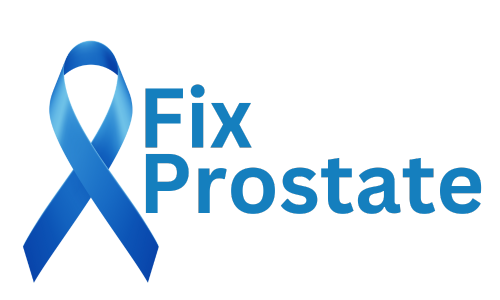Prostate
Exercises
Prostate exercises are an often overlooked aspect of men’s health and well-being. Just as physical fitness is crucial for maintaining a healthy body, specific exercises and lifestyle habits can contribute to prostate health.
On this page, we explore the importance of prostate exercises, including their potential benefits, how to perform them, and their role in promoting prostate health and reducing the risk of prostate-related issues.
Whether you’re seeking to improve urinary function, alleviate discomfort, or simply enhance your overall well-being, this comprehensive guide will provide valuable insights into incorporating prostate exercises into your daily routine.
What Are Prostate Exercises
Prostate exercises are a set of physical activities and lifestyle practices aimed at promoting prostate health and potentially reducing the risk of prostate-related issues in men.
These exercises primarily focus on enhancing blood circulation, maintaining healthy muscle tone, and supporting the overall well-being of the prostate gland and surrounding tissues.
Common Types Of Prostate Exercises
Kegel Exercises: Kegel exercises are often recommended for both men and women to strengthen the pelvic floor muscles. These exercises can help improve urinary control and sexual function. To perform Kegel exercises, contract and hold the muscles used to stop urination for a few seconds, then release. Repeat this process several times throughout the day.
Aerobic Exercise: Regular aerobic activities such as walking, jogging, swimming, or cycling can promote cardiovascular health and improve blood circulation throughout the body, including the prostate area.
Pelvic Stretches and Yoga: Gentle stretches and yoga poses that focus on the pelvic region can help alleviate tension, improve flexibility, and promote relaxation in the pelvic muscles and surrounding tissues.
Deep Breathing and Relaxation Techniques: Stress reduction and relaxation exercises, including deep breathing, meditation, and progressive muscle relaxation, can help lower stress levels. High stress may contribute to prostate problems, so managing stress is important for prostate health.
Prostate Massage: Some men may choose to undergo prostate massage therapy, which involves the gentle massaging of the prostate gland through the rectum. This technique is believed by some to help improve circulation, reduce inflammation, and relieve certain prostate-related symptoms. However, it should be performed by a qualified healthcare provider.
Diet and Nutrition: While not exercises in the traditional sense, dietary choices play a significant role in prostate health. Consuming a balanced diet rich in fruits, vegetables, whole grains, and healthy fats can support overall well-being.
Hydration: Staying adequately hydrated by drinking plenty of water is important for prostate health, as it helps flush toxins from the body.
It’s important to note that while prostate exercises and healthy lifestyle practices can contribute to prostate health, they should not be used as a replacement for medical treatment when necessary.
Men experiencing prostate-related symptoms or at risk for prostate conditions should consult with a healthcare provider for proper evaluation and guidance on appropriate management and treatment options.

How To Do Prostate Exercises
Please note that if you are unsure about how to do these exercises or have any medical concerns, it’s essential to consult with a healthcare professional for proper guidance.
1. Kegel Exercises:
- Identify the Muscles: To locate the pelvic floor muscles, try to stop the flow of urine when you’re urinating. The muscles you use to do this are the same ones you’ll work during Kegel exercises.
- Contract and Hold: Sit, stand, or lie down comfortably. Contract your pelvic floor muscles and hold the contraction for a few seconds (start with 5 seconds and gradually increase). You should feel a pulling or lifting sensation in the pelvic area.
- Relax: Release the contraction and rest for the same amount of time as you held the contraction.
- Repeat: Perform a set of 10-15 repetitions, gradually increasing the number of sets as your pelvic muscles become stronger. Aim to do Kegel exercises several times a day.
2. Deep Breathing and Relaxation Techniques:
- Deep Breathing: Sit or lie down in a comfortable position. Inhale deeply through your nose, allowing your abdomen to expand as you breathe in. Exhale slowly through your mouth, focusing on fully expelling the air. Repeat this deep breathing for several minutes, concentrating on each breath.
- Progressive Muscle Relaxation: Begin with your toes and work your way up through your body, tensing and then relaxing each muscle group as you go. This technique helps release tension and promotes relaxation.
3. Pelvic Stretches and Yoga:
- Various yoga poses and stretches can promote pelvic flexibility and relaxation. Some poses like the Child’s Pose, Happy Baby Pose, and Cat-Cow Pose may be helpful. It’s recommended to consult with a qualified yoga instructor for guidance on specific poses tailored to your needs.
4. Prostate Massage:
- Prostate massage should only be performed by a qualified healthcare provider or trained therapist. It involves the insertion of a lubricated, gloved finger into the rectum to gently massage the prostate gland. It’s essential to follow proper hygiene and safety guidelines when considering this procedure.
In conclusion, prostate exercises represent a proactive approach to promoting and maintaining prostate health. These exercises, which include Kegels, aerobic activities, pelvic stretches, relaxation techniques, and more, can contribute to improved blood circulation, muscle tone, and overall well-being of the prostate gland and surrounding tissues.
However, it’s crucial to approach these exercises with proper knowledge and guidance. Consultation with a healthcare provider is highly recommended, as they can offer personalized advice, ensure exercises are performed correctly, and tailor recommendations to individual needs.
By incorporating prostate exercises into your daily routine, you can take positive steps towards supporting your prostate health and overall quality of life.
